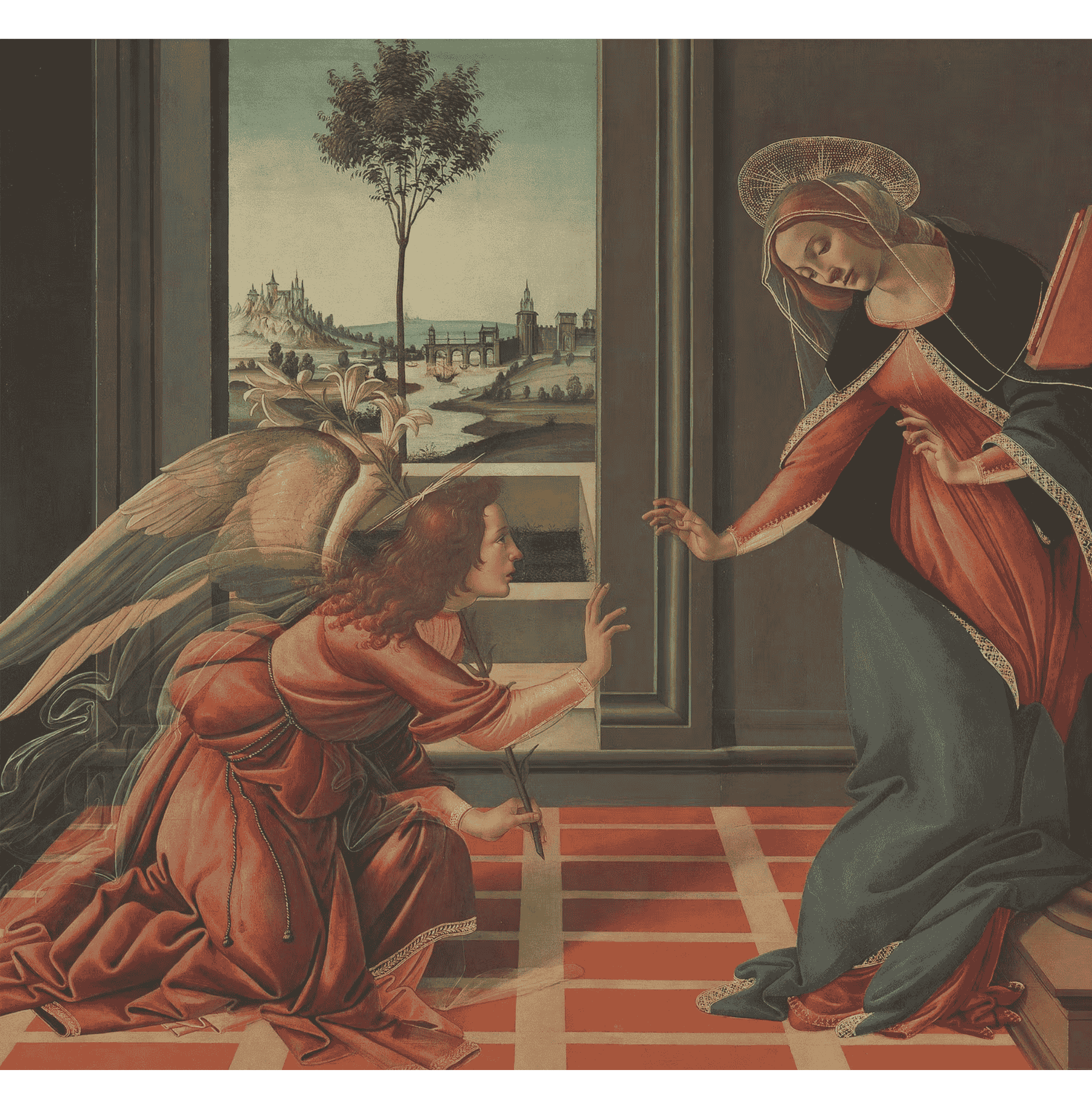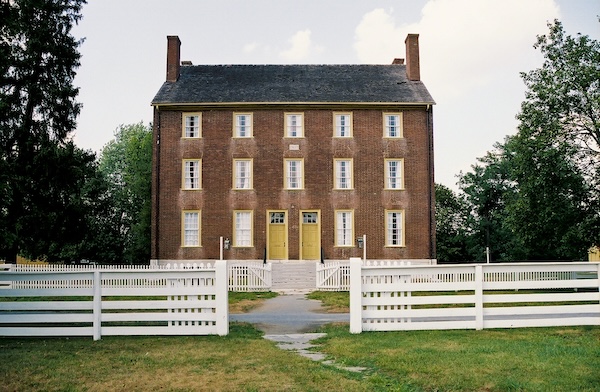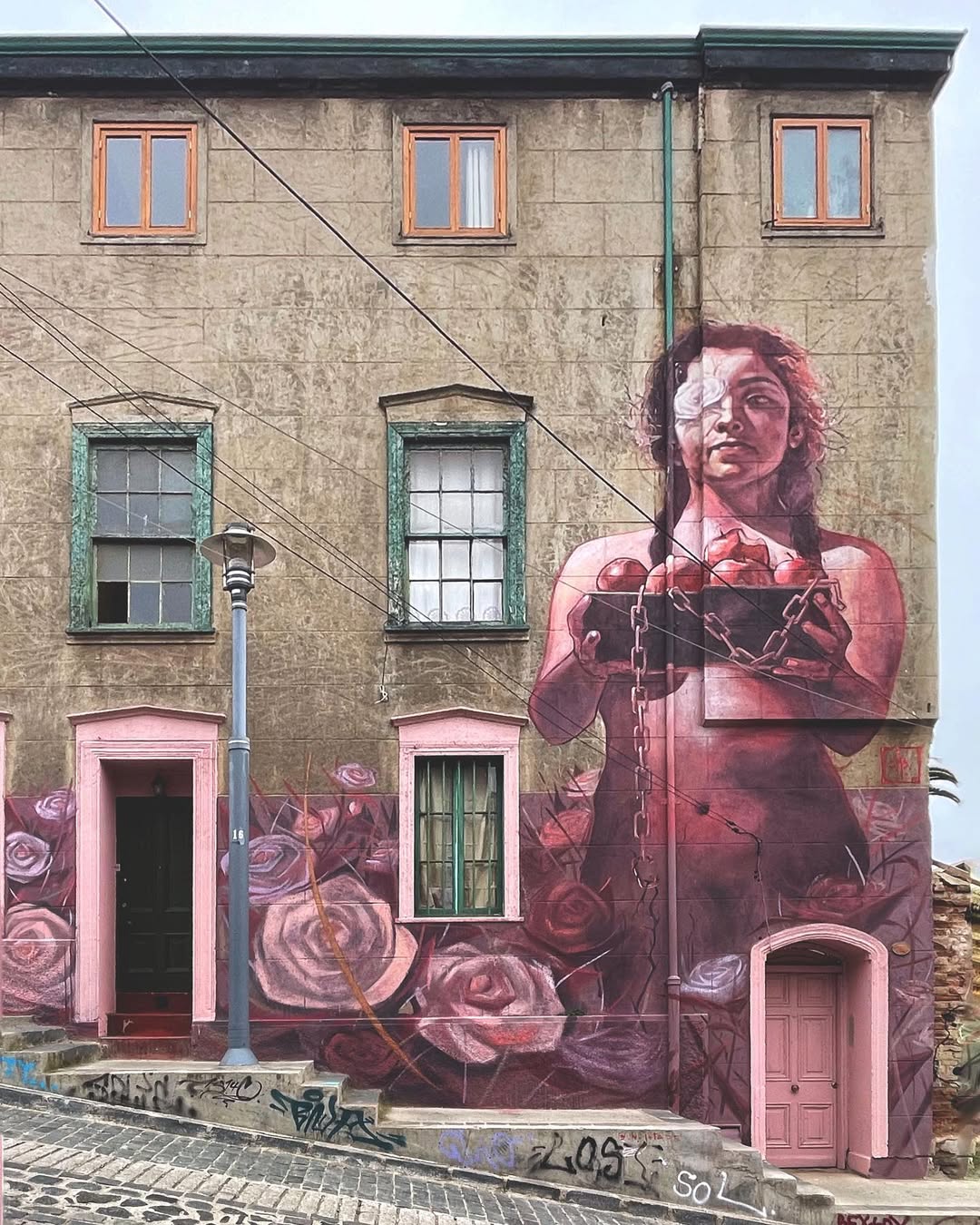.jpeg)
The Tower of the Spirit
Pentecost images have a limited number of variations. We usually see the disciples sitting together with tongues of fire on their head as a sign that the Spirit has descended on them. Artists are also inclined to use the symbol of the dove, which, by itself or in a dynamic flock, dives down or hovers ‘praying’ or brooding’ above people. The German Catholic priest-artist Sieger Köder does something different, and yet he remains close to the Bible story. He does not show us the Pentecost event itself but shows us its meaning. First of all he focuses on the element of the tongues and languages that play a central role in the Pentecost story. At Pentecost, the Spirit equips Jesus’ disciples to witness about Christ to all the nations on earth.
In order to depict this aspect, Köder contrasts the Pentecost story of language connection with that of language confusion at the building of the tower of Babel. We see the tower of Babel represented in grey and dark colours on the lower half of the silkscreen/serigraph. The people sitting on the scaffolding of this never completed construction are looking drab, dispirited, and lonely. In their stubborn, high-handed way and pride they wanted to build a tower reaching to the heavens, but God came down from heaven (!), ensured that they no longer understood each other and scattered them across the earth.
However, in the middle of the spiritless remnants we see a new building rise up, bathed in a warm, fiery glow. Below Peter comes towards us through open doors. In his hands he holds a book on which is written the Greek word ‘evangelion.’ The Gospel, the Good News of Jesus’ life and resurrection, forms the basis of a new construction, built by the Spirit. Behind Peter is the room where we can see the disciples with the tongues of fire on their heads. They are also still grey, but the Spirit already enables Peter to step outside, full of fire, in order to deliver his Pentecost sermon (Acts 2:14-41).
.jpeg)
The rest of the building consists of open windows with people leaning outside, directed towards the world outside. On the first floor three clergymen are pictured, representing three ecclesiastical traditions. On the left we see the Lutheran theologian and martyr Dietrich Bonhoeffer as the representative of the Protestant churches that emerged from the Reformation. On his lap is a Bible. In the middle window stands the Orthodox patriarch Athenagoras of Constantinople, who in 1965 revoked the ecclesiastical excommunication of 1054 against the Catholic Church. He holds an Easter candle. On the right Pope John XXIII represents the Catholic Church with his arms characteristically stretched out to the people with open hands. On the banner above him is the title of his encyclical Pacem in terris. With these three 20th-century church leaders the emphasis on this first floor is on the unity of the church and ecumenism. The new building appears therefore to be especially meant as an image of the church, which found its origin in Pentecost.
.jpeg)
On the second floor four young people lean out of the windows. They stand for the youngest generation of followers of Christ. The men on the far left and the far right represent the young people who are active inside the church. On the left a German youth leader holds a flag with the Chi Rho monogram of Christ. During the Nazi period this flag was the banner of young people who were not afraid to show who their real Führer was. On the right a young priest waves a censer outside, as if he wants to spread the fragrance of Christ in the world. The two middle figures, a woman and a young black man, want to strive for peace and justice; their engagement is directed towards the world. Together these four people show that everyone is welcome in this building of the Spirit and that there are many ways that we can be witnesses of the Gospel.
Where this beacon of light, this red lighthouse radiating warmth and light leads to is hidden from our view. On the third floor we do see an empty open window. This, said Sieger Köder, is the most important window. It is the window of the future. Who would we like to place there and with which object or symbol? There is hope, as Jesus pours out his Spirit on his followers not only on that first Pentecost, but also today and in the future.
**********
Sieger Köder: Pentecost (I will Pour out my Spirit), 2007, silkscreen/serigraph, limited edition of 220 copies.
Sieger Köder (1925-2015) was born in Wasseralfingen (Baden-Württemberg), Germany. He was a prisoner of war during World War II and was part of the Catholic Neudeutschland, a youth movement founded in 1919 opposed to Nazism that developed further iterations after WW II. He trained as a silversmith and painter and worked for several years as an art teacher at a secondary school. At age 41 he started to study theology in Tübingen and in 1971 he was ordained as a priest. He combined his calling as a parish priest with his artistic work and made countless paintings, altar pieces, and stained-glass windows for churches within and beyond Germany. He continued to paint after his retirement. He made a series of remarkable external murals for the St James Pilgrim House in Hohenberg, Germany and collaborated on eleven stations along the Franconian-Swabian Jacobspilgerweg, the ancient pilgrims’ way to Santiago de Compostela in Spain. Köder’s work is influenced by Marc Chagall and stands out for his strong colours and robust, stocky figures. His works show provocation, anger, humour, and profound tenderness. He always has an eye for the human response to God’s call. Köder has been greatly influenced by his war experiences. This can be clearly seen in his pictures of the suffering Christ and human suffering and evil. One of his best-known works is a fresco of the Last Supper for the German College in Rome. Köder’s work gained renown in his later years and he received several prizes. In 1985 Pope John Paul II awarded him the honorary title of ‘Monsignor’ and the Order of Merit. He remained his modest self and considered people who came to look at ‘the great artist’ a real trial. He once noted during a newspaper interview: ‘People come to Ellwangen and ask for the way to the painter. If they are so interested in the artist, then they have not understood his paintings.’ Gemma Simmonds, C.J. wrote a book about Köder and his work: Glimpses of the Divine: The Art and Inspiration of Sieger Koder (2010). Another publication was: Gertrud Widmann (ed.): Die Bilder der Bibel von Sieger Köder.
Marleen Hengelaar-Rookmaaker is chief editor of ArtWay.
ArtWay Visual Meditation Pentecost 2021
%20(1).png)












